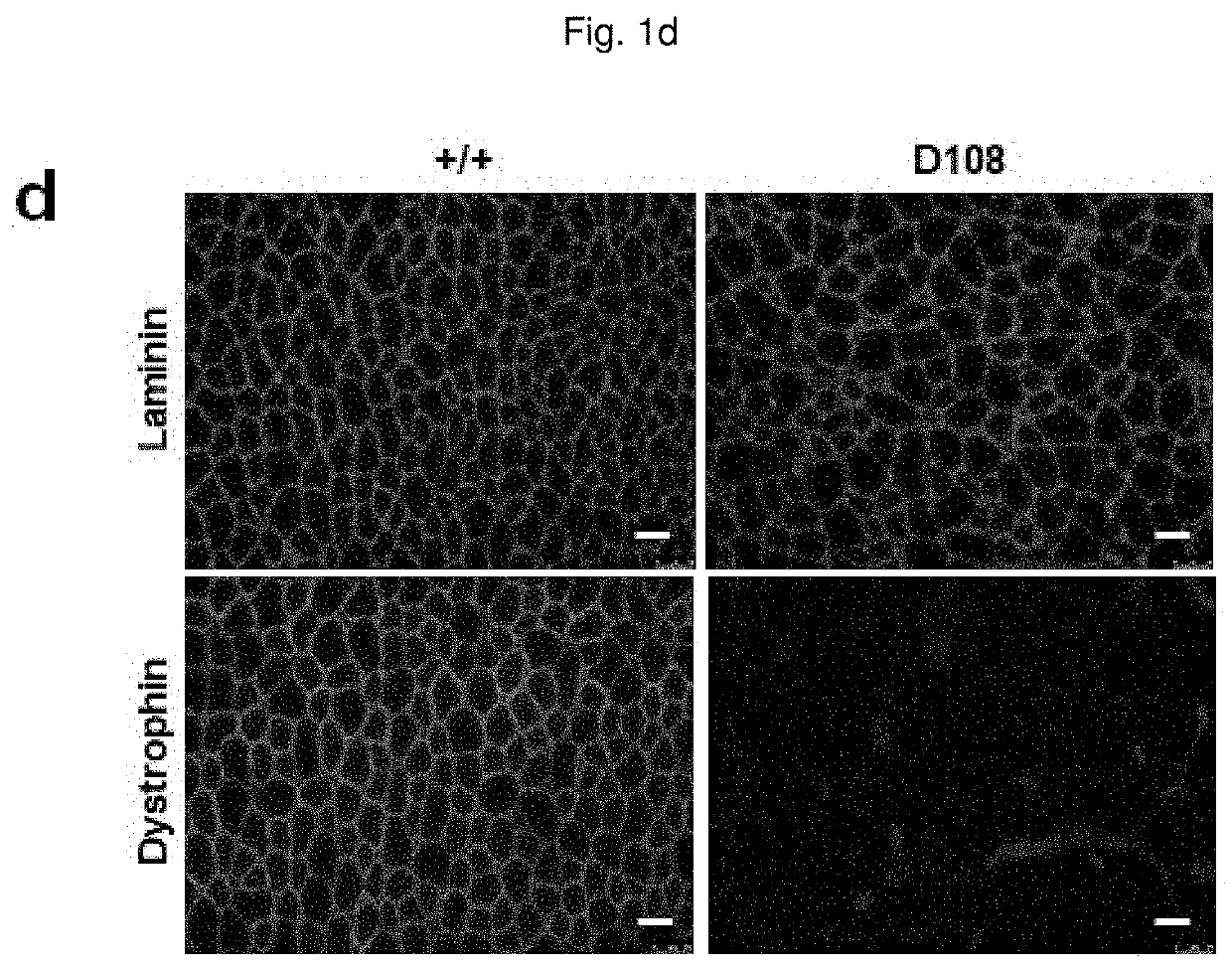Composition for base editing for animal embryo and base editing method
a technology of base editing and animal embryos, applied in the field of composition for base editing for animal embryos and base editing methods, can solve problems such as difficulty in inducing single base substitution in a target specific manner
- Summary
- Abstract
- Description
- Claims
- Application Information
AI Technical Summary
Benefits of technology
Problems solved by technology
Method used
Image
Examples
example 1
on of BE3 mRNA
[0148]After being isolated by digestion from pCMV-BE3 (Addgene; cat. #73021; FIG. 6), rAPOBEC1-XTEN (linker) and UGI (uracil DNA glycosylase inhibitor) were inserted into the pET-nCas9 (D10A)-NLS vector (see Cho, S. W. et al. Analysis of off-target effects of CRISPR / Cas-derived RNA-guided endonucleases and nickases. Genome Res 24, 132-141 (2014)) to construct pET-Hisx6-rAPOBEC1-XTEN-nCas9-UGI-NLS (SEQ ID NO: 7; FIG. 7) which was then used as a BE3 mRNA template.
[0149]Sequences of individual regions in pET-Hisx6-rAPOBEC1-XTEN-nCas9-UGI-NLS (SEQ ID NO: 7) are summarized as follows:
[0150]His x6: SEQ ID NO: 8;
[0151]rAPOBEC1: SEQ ID NO: 9;
[0152]XTEN (linker): SEQ ID NO: 10;
[0153]nCas9 (D10A): SEQ ID NO: 11;
Linker:(SEQ ID NO: 14)TCTGGTGGTTCT
[0154]UGI: SEQ ID NO: 12;
Linker:(SEQ ID NO: 14)TCTGGTGGTTCT
[0155]NLS: SEQ ID NO: 13.
[0156]PCR was performed on the pET-Hisx6-rAPOBEC1-XTEN-nCas9-UGI-NLS vector with the aid of Phusion High-Fidelity DNA Polymerase (Thermo Scientific) in th...
example 2
on of sgRNA
[0157]A dystrophin gene Dmd and a tyrosinase gene Tyr targeted guide RNA (sgRNA) having the following nucleotide sequence were synthesized and used in subsequent experiments:
5′-(target sequence)-(GUUUUAGAGCUA; SEQ ID NO: 1)-(nucleotide linker)-(UAGCAAGUUAAAAUAAGGCUAGUCCGUUAUCAACUUGAAAAAGUGGCACCGAGUCGGUGC; SEQ ID NO: 3)-3′
[0158](the target sequence is the same sequence as the underlined nucleotide sequence in FIG. 1a (Dmd) or FIG. 2a (Tyr), with the exception that “T” is converted to “U”, and
[0159]the nucleotide linker has the nucleotide sequence of GAAA).
[0160]The sgRNA was constructed by in vitro transcription using T7 RNA polymerase (see Cho, S. W., Kim, S., Kim, J. M. & Kim, J. S. Targeted genome engineering in human cells with the Cas9 RNA-guided endonuclease. Nat Biotechnol 31, 230-232 (2013)).
example 3
on of Ribonucleoproteins (RNPs)
[0161]Rosetta competent cells (EMD Millipore) were transformed with the pET28-Hisx6-rAPOBEC1-XTEN-nCas9(D10A)-UGI-NLS (BE3) expression vector prepared in Reference Example 1 and then incubated with 0.5 mM isopropyl beta-D-1-thiogalactopyranoside (IPTG) at 18° C. for 12 to 14 hours to induce expression. Following protein expression, bacterial cells were harvested by centrifugation and the cell pellet was lysed by sonication in a lysis buffer [50 mM NaH2PO4 (pH 8.0), 300 mM NaCl, 10 mM imidazole, 1% Triton X-100, 1 mM PMSF, 1 mM DTT, and 1 mg / ml lysozyme].
[0162]The cell lysate thus obtained was subjected to centrifugation at 5,251×g for 30 min to remove cell debris. The soluble lysate was incubated with Ni-NTA beads (Qiagen) at 4° C. for 1 hr. Subsequently, the Ni-NTA beads were washed three times with wash buffer [50 mM NaH2PO4 (pH 8.0), 300 mM NaCl, and 20 mM imidazole], followed by eluting BE3 protein with elution buffer [50 mM Tris-HCl (pH 7.6), 150-...
PUM
| Property | Measurement | Unit |
|---|---|---|
| pH | aaaaa | aaaaa |
| pH | aaaaa | aaaaa |
| pH | aaaaa | aaaaa |
Abstract
Description
Claims
Application Information
 Login to View More
Login to View More - Generate Ideas
- Intellectual Property
- Life Sciences
- Materials
- Tech Scout
- Unparalleled Data Quality
- Higher Quality Content
- 60% Fewer Hallucinations
Browse by: Latest US Patents, China's latest patents, Technical Efficacy Thesaurus, Application Domain, Technology Topic, Popular Technical Reports.
© 2025 PatSnap. All rights reserved.Legal|Privacy policy|Modern Slavery Act Transparency Statement|Sitemap|About US| Contact US: help@patsnap.com



